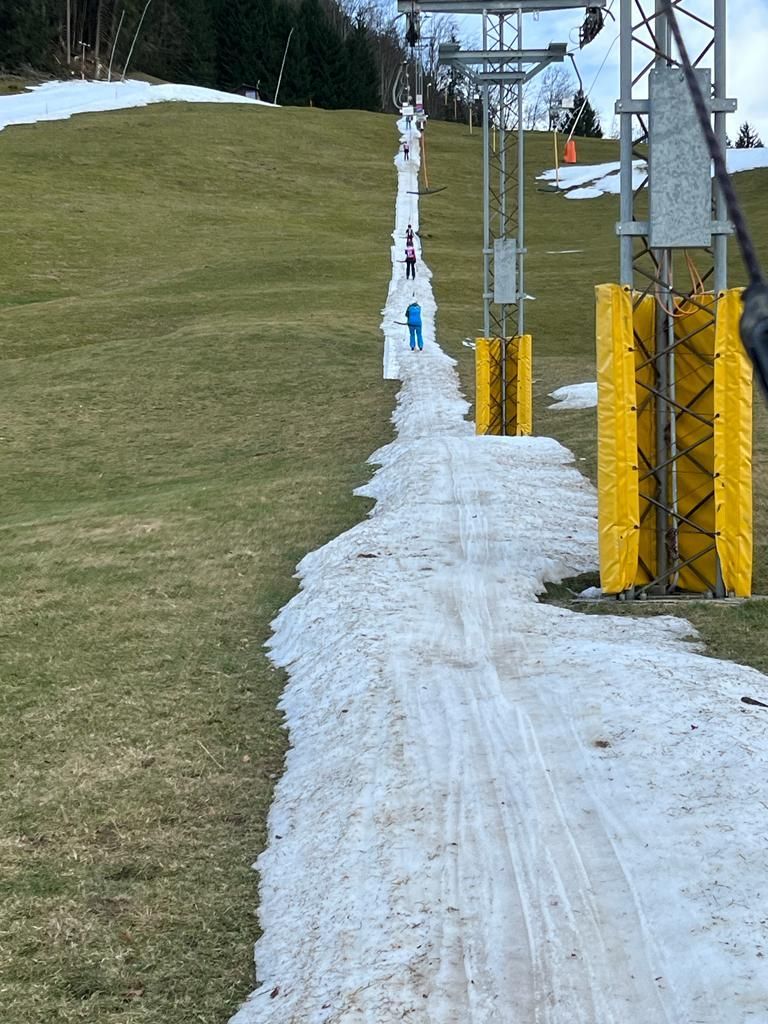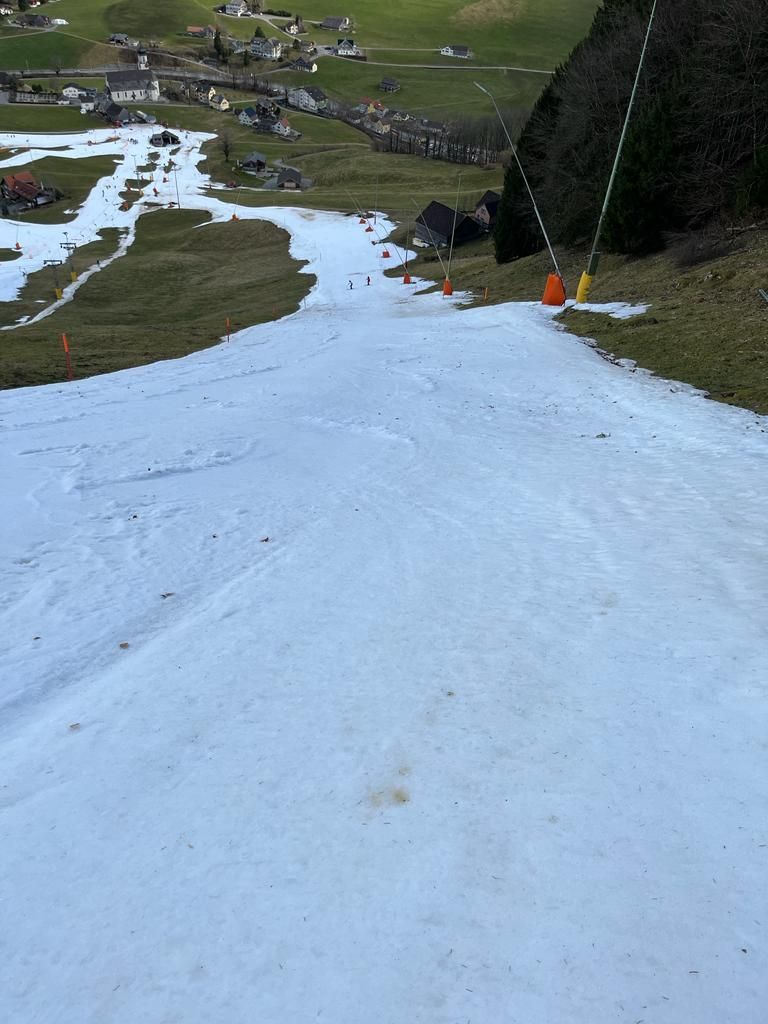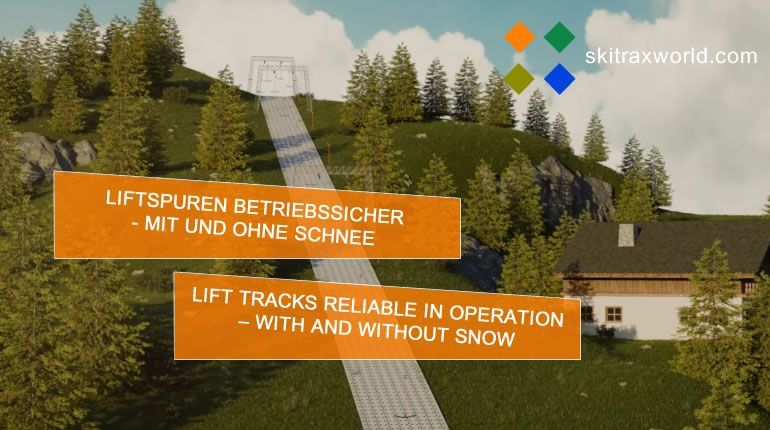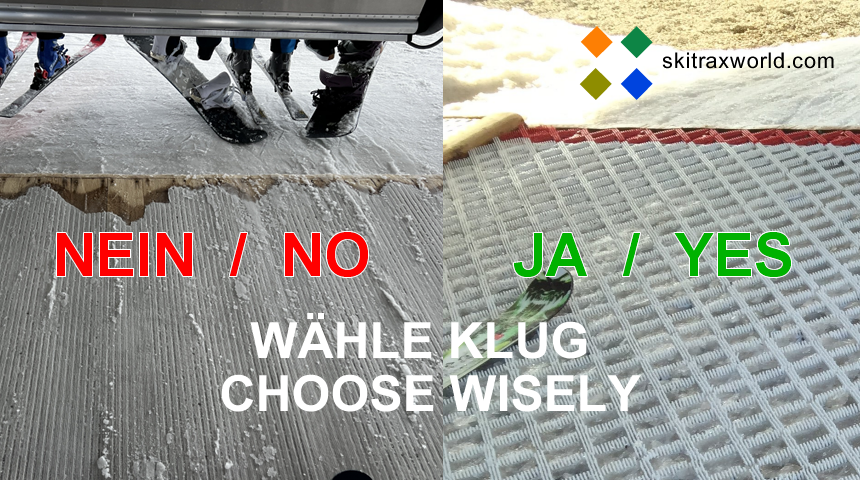Lift lines - how the ski season can be saved
It would be so easy with the Lifttrax sliding mats.
Many ski resorts with T-bar lifts below approx. 1000m have had to close their lifts due to a lack of snow. In most cases there is still enough snow to ski on the snow-covered sides of the lift, but the snow in the lift track has melted, so skiing has had to be stopped.
It didn't have to be! Clever ski resorts have already covered the lift track with our Lifttrax SP skid mats before the first snowfall. First cover the ground with a fleece, then place the mats on top and fix them to the ground with pegs. This means that everything can be quickly dismantled again in spring and stored on pallets.
The ski area is covered with snow as usual and the mats are provided with sufficient snow cover. If the snow melts due to high temperatures, it has been shown that the mats significantly hold the snow together in the lift track and ensure that the snow melts much more slowly. When the temperatures have also taken this snow away, skiers and boarders continue on the mats to the lift exit.
As the example of the Ebenalb ski resort (Switzerland) shows, without the sliding mats, skiing would not have been possible for weeks. Even ski races can be held at weekends, when other ski resorts have already had to announce the end of the season.
A mat width of approx. 134 cm is ideal for a 1-person lift. An anchor lift for 2 people should be a little wider, especially if many snowboarders use the lift. As most surface lifts are between 300m and 800m long, this lift track solution can be used to ensure operating times at high temperatures. Due to the low speed of the skis & boards sliding on the mats, there is also very little wear on the mats. With good cleaning of the mats and optimum storage of the mats on appropriate pallets, a service life of up to 20 years can be expected. This makes the one-off investment in the Lifttrax SP mat system for the lift lanes worthwhile.
Lifttrax FA also provides the optimum mats for lift entrances and exits. Hundreds of mountain railroads on 5 continents use this solution.
Keyword snowfarming: due to the good insulation of the mats from the ground to the snow, there is also less melting when snowfarming over the summer months! If between 10-20% less snow melts from the ground side due to the insulation of the mats, more residual snow can be expected when preparing the slopes in the fall. This in turn means that less electricity is required for snow production.
We are happy to provide individual advice.
UPDATE - Berichte von anderen Installationen


























